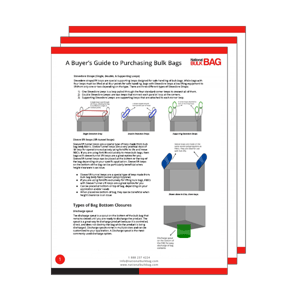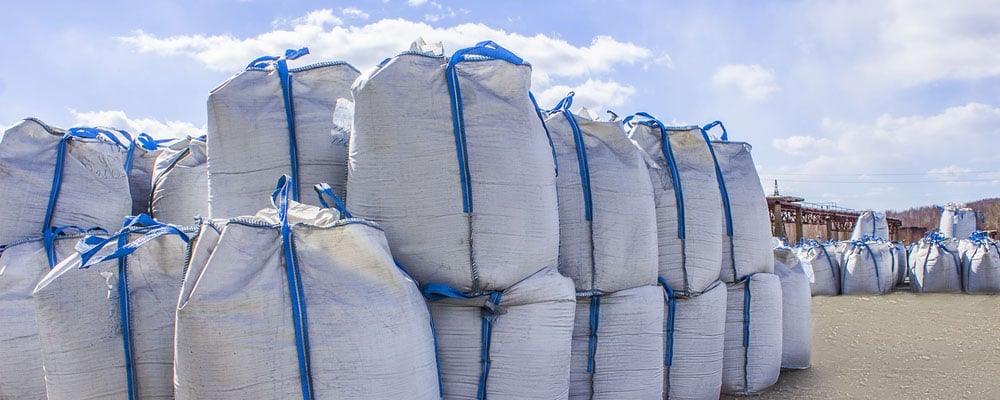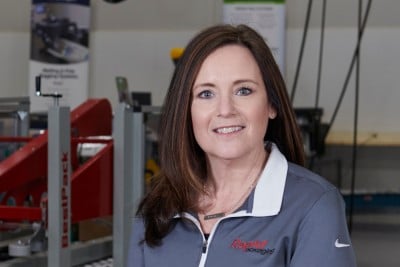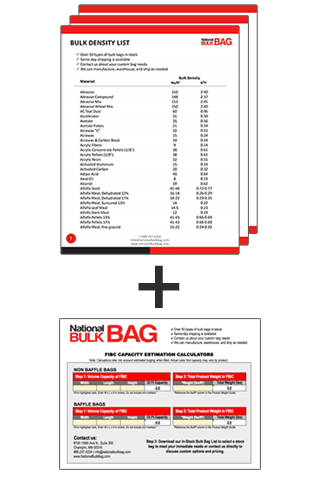At National Bulk Bag, we address a variety of industry applications and product needs. The organics industry which includes but isn’t limited to food, hemp, and other agricultural products category presents perhaps the greatest set of unique requirements and challenges. This is primarily driven by the fact that these materials are grown in the ground and when harvested have shelf lives. The longer these perishable items spend between harvest and processing, the greater the risks for contamination and spoiling.
This is also true in the hemp/biomass industry where long processing queues can significantly extend the amount of time the product will spend in transportation and storage. It’s important that the product is protected at all times during these extended periods to prevent the biomass from becoming contaminated and ensure the product is ready for processing when the time comes. Let’s explore how FIBC bulk bags can protect your product during transportation and storage and enable a smooth transition from harvest to processing.
Moisture Control
Moisture control is a two-way street. Generally, the goal during transport and storage is to keep product moisture in and keep outside moisture out – preventing any moisture-based contamination. Depending on your specific need and/or application, different types and configurations of bulk bags can help:
Coated vs Uncoated
When it comes to hemp/biomass, the decision between a coated and non-coated bag is straight-forward. The high-moisture nature of the hemp/biomass product means that we DO NOT recommend a coated bag for the transport and/or storage of these products. However, if your product is being transported and/or stored in a shelf-stable environment, such as a temperature controlled dry warehouse facility – a traditional uncoated bag is a great fit. The fabric used in uncoated bags allows the product to breathe and aids in mold prevention. (for more information on coated vs uncoated bags, check out this article).
FIBC Liners
If you want the most protection from moisture, there is no substitute for a bag liner. These liners are made of polyethylene and can be sealed tight to prevent any moisture from leaving or entering (contaminating) the bag contents. In the hemp industry, these can also be combined with a nitrogen packing solution – allowing the user to inject nitrogen into the bag (replacing the oxygen present in the air) and sealing the bag This can greatly extend the shelf life of the product as nitrogen is non-reactive unlike the highly reactive it’s replacing. For more information on FIBC liners, read our article on the topic - https://blog.nationalbulkbag.com/bulk-bag-liners/revisiting-fibc-liners
Bulk Bag Height & Stacking
Transportation and/or storage is one of the most common industry applications of bulk bags. However, not all bags are designed for stacking – a feature that is required in truck-based transportation and in most long-term storage facilities. For example, the common high-capacity bag height of 63-inches IS NOT recommending for stacking. For these applications, we recommend a 50-inch height bag. This size bag is designed to stack two bags high in standard semi-truck trailer configurations (8.5 feet high or approximately 102 inches). The 50-inch height also gives them extra stability thus making them a safer option in long-term storage facilities where stacking is taking place.
Note: This section is primarily comparing 50-inch and 63-inch bags as these are commonly found heights in the bulk bag industry.
UV Protection
If you don’t plan on using a bag with liner setup as described above, what kind of bag do we recommend? We recommend avoiding a coating in order to allow the product to breathe. This is especially important for hemp (and all biomass) because of the increased risk of molding if the product receives no air flow as even dried hemp has some moisture content.
Another option is a vented bag. Vented bags allow even more air flow versus a standard non-coated bag. This can often come down to preference of the user, but it is recommended that hemp and biomass producers use a solution that allows airflow to minimize the risk of molding.
Dust & Other Particulates
The way a standard woven polypropylene bag is constructed means that it is not inherently dust proof. The woven nature of the bag material means that on a standard bag, dust and other contaminates can sift through and potentially contaminate the product. The same is true for very fine powders and/or other fine products that are stored in bags as they can often sift out of a standard bag.
For situations where ANY contamination is absolutely unacceptable, we recommend a FIBC liner. Liners are made of polyethylene and can be sealed shut to completely seal the product inside the bag. This will prevent dust and other particulate matter from entering the bag (as well as prevent find powders stored in the bag from escaping.
Thanks for reading!
It's our mission to make your bag buying experience easy, informative, and enjoyable. We also want to share our knowledge with you, so you can make the best purchasing decision for the company you represent. Our Buyer's Guide to Purchasing Bulk Bags includes critical information ranging from types of bags to important safety information about handling and transportation.

Download the guide by clicking below. By downloading, you'll learn all about:
- Types of bags
- Coated vs. uncoated
- Liners
- Bags with baffles
- Types of lift loops
- 5:1 & 6:1 safety guidelines
- Much more!
Click the button below to download our comprehensive buyer's guide.







